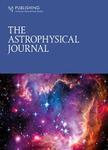版权所有:内蒙古大学图书馆 技术提供:维普资讯• 智图
内蒙古自治区呼和浩特市赛罕区大学西街235号 邮编: 010021
T=题名(书名、题名),A=作者(责任者),K=主题词,P=出版物名称,PU=出版社名称,O=机构(作者单位、学位授予单位、专利申请人),L=中图分类号,C=学科分类号,U=全部字段,Y=年(出版发行年、学位年度、标准发布年)
AND代表“并且”;OR代表“或者”;NOT代表“不包含”;(注意必须大写,运算符两边需空一格)
范例一:(K=图书馆学 OR K=情报学) AND A=范并思 AND Y=1982-2016
范例二:P=计算机应用与软件 AND (U=C++ OR U=Basic) NOT K=Visual AND Y=2011-2016



The cosmic merger history of supermassive black hole binaries (SMBHBs) is expected to produce a low-frequency gravitational wave background (GWB). Here we investigate how signs of the discrete nature of this GWB can manifest in pulsar timing arrays (PTAs) through excursions from, and breaks in, the expected power law of the GWB strain spectrum. To do this, we create a semianalytic SMBHB population model, fit to North American Nanohertz Observatory for Gravitational Waves (NANOGrav's) 15 yr GWB amplitude, and with 1000 realizations, we study the populations' characteristic strain and residual spectra. Comparing our models to the NANOGrav 15 yr spectrum, we find two interesting excursions from the power law. The first, at 2 nHz, is below our GWB realizations with a p-value significance p = 0.05–0.06 (≈1.8σ–1.9σ). The second, at 16 nHz, is above our GWB realizations with p = 0.04–0.15 (≈1.4σ–2.1σ). We explore the properties of a loud SMBHB that could cause such an excursion. Our simulations also show that the expected number of SMBHBs decreases by 3 orders of magnitude, from ∼106 to ∼103, between 2 and 20 nHz. This causes a break in the strain spectrum as the stochasticity of the background breaks down at


电话和邮箱必须正确填写,我们会与您联系确认。
版权所有:内蒙古大学图书馆 技术提供:维普资讯• 智图
内蒙古自治区呼和浩特市赛罕区大学西街235号 邮编: 010021

暂无评论